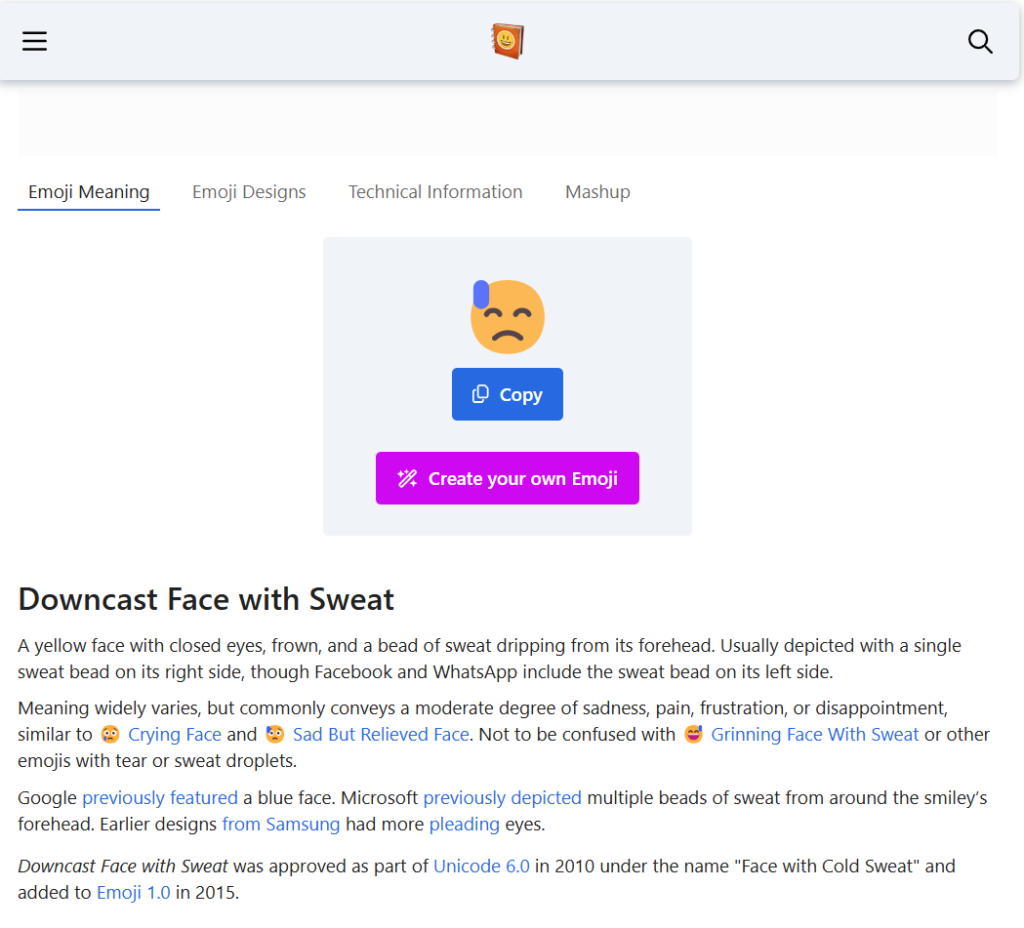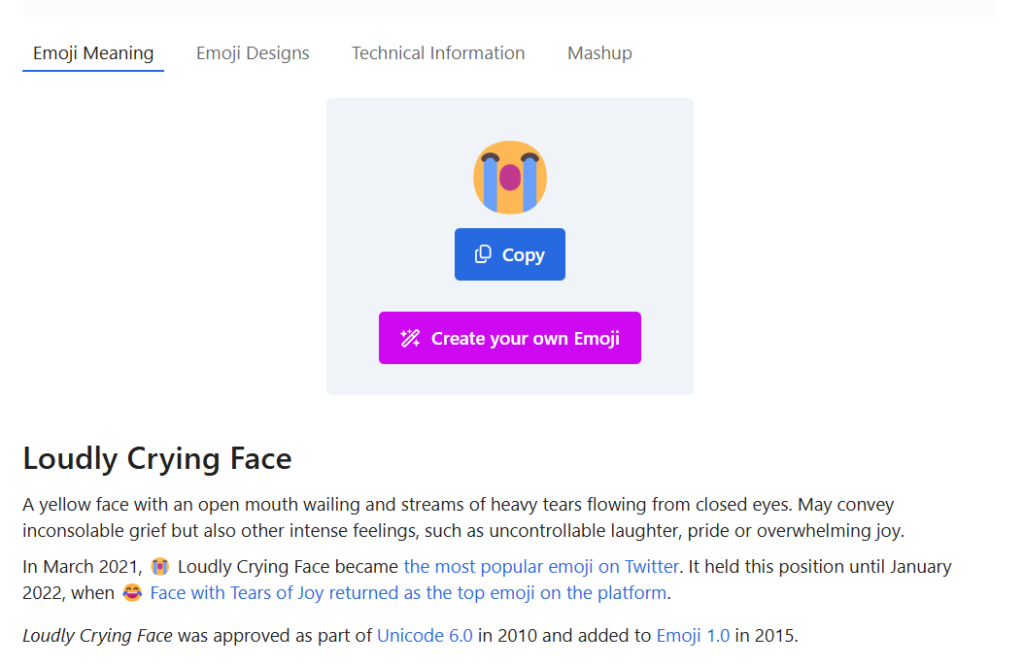3,790 emojis are in the Unicode Standard as of September 2024. The next expected emoji release (Emoji 17.0) is slated for September 2025.
Unicode and Emojipedia are the go-to resources for finding uniform text descriptions to pair with the emojis mentioned in legal writing. Unicode keeps a separate list of modifier sequences that takes into account skin tone descriptors.
An emoji is “any of various small images, symbols, or icons used in text fields in electronic communication (as in text messages, email, and social media) to express the emotional attitude of the writer, convey information succinctly, communicate a message playfully without using words, etc.” Merriam-Webster.com
While everyday emoji usage is a word “substitute”, words must be re-introduced when emojis are blended into legal writing.
But why?
We can go back to court filing first principles. In Michigan, the court rules require that all filed documents and court-issued documents must be in the English language. MCR 1.109(D)(1)(a)
The problem(s)
Images, symbols, or icons are not the English language and they are not necessarily accessible to low-vision readers. Or to those who prefer to use text-to-speech tools for taking in their information.
Consider pages 3 and 6 of this recent memorandum opinion and order issued by a federal court judge in the District of Columbia.
Notice how the authoring judge did not include any text descriptors for each of the emoji images pasted into the written opinion?
Those missing text descriptions make portions of the judge’s opinion inaccessible to those who rely on digital text-to-speech tools to access court information.
The audio from this video using the Natural Reader text-to-speech tool shows how the emoji images are skipped when the decision is “read”.
Equally bad, images—like emojis—are often left out of court decisions when they are republished in electronic databases.
A comparison of a Michigan Court of Appeals published decision against how the decision is furnished by an online legal database might be helpful.


The legal-writing lesson: Emojis, alone, cannot make your point. Emojis must be paired with descriptive text.
Avoid adding emojis without the Unicode emoji short name:
Simply take a few moments to consult with Unicode and Emojipedia to find and add the uniform text descriptor for the emojis your writing refers to.
The Government’s added textual descriptors in its factual basis filing in this federal court matter is a fine example.
Other times, you might come across emoji text descriptions without the images. Unsure how they look? Paste the description into Emojipedia’s search bar.


Better practices
Too often, a writer chooses to either include only the emoji image or the descriptive text. That’s a false choice.
A better route is for the writer to include both the emoji image and the descriptive text in parenthesis. Belt and suspenders. [Ironically, there are no emojis for a belt or suspenders. 🥹 (face holding back tears emoji).]
Or, blend the descriptive text with the emoji in the writing like the Washington state Court of Appeals did in State v. D.R.C., 13 Wn. App. 2d 818 (2020):
As a reminder of the value of including both the emoji image and the descriptive text, notice how this republished decision by a major online legal research provider dropped the emoji images from its content.

Those who are not low-vision readers would likely prefer seeing the emoji images displayed within the context of the legal writing. Even so, today’s legal writer must write for a dynamic audience and make their material accessible to those who might only access their writing from text-only online legal databases, and those who rely on text-to-speech tools for digesting their information.
Lucky for us, the Unicode and Emojipedia online resources make it easy for legal writers to frame and present their emoji content in a way that is uniform and accessible to all.
